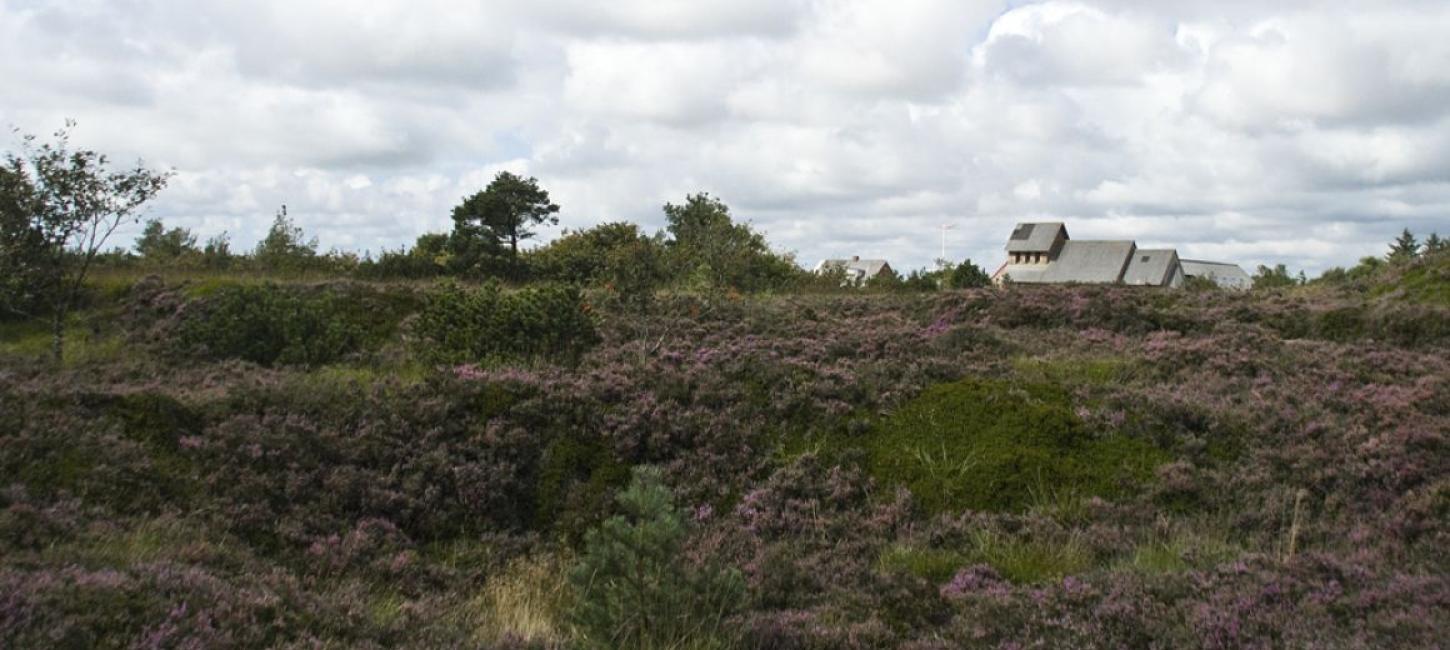
The Danish Heath
The wild and dry heaths were created by Stone Age farmers who unknowingly exhausted the Danish farm lands . Through thousands of years, the heath was preserved by the heath farmers who also didn't know any better.
Today we have two tasks; one of them is to keep the heath covered by plants to prevent sand migration; another is to preserve and care for the beautiful heaths that remain in the West Jutland landscape.
Blooming heather, spicy aromas, and the song of the woodlark are what makes a hike on the heath on a warm summer's day a wonder for your body and soul.
We can thank the Stone Age farmers for the heath; they didn't know how to treat the soil to keep it furtile; therefore they slowly sucked the soil dry of nourishment by only sowing and harvesting and never adding fertilizer of any kind. When their crops stopped yielding enough produce, they just moved to a new area, leaving a desert behind them.
Heather was used for many Things
When most of Jutland had been turned into heath, there was only one way forward; you had to become a heath farmer and attempt to live off heather. This life was difficult and wretched. Still, its amazing how many uses heather had. It was used for innumerous things: instead of firewood; for roof coverage; bedding; building materials; paving the roads; and as fodder for cattle and other animals. Heather peat was also used for roof ridges and insolation.
The Exhaust of the Land continued
By only sowing and harvesting and never fertilizing, the heath farmers continued to drain the soil of nourishment; if we want to preserve the last heaths in Denmark, we must do the same. The sheep and cattle that eat the grass and the sprouting bushes and trees in the large heaths are actually doing a full time job of helping to preserve the beautiful heath.
Sand Migration
A couple of hundred years ago, sand migration became such a big problem that people, in some areas, worked very hard to preserve the heather; some tried to prevent sand migration by planting lots of robust pine trees or by building levees. This was done at both Tipperne and Værneengene for instance.
Hill Islands and River Valleys
The landscape is divided into two parts; an eastern part that consists of a sandy hill-island with heaths and river valley wetlands; and a western part with beach lakes and a narrow belt of sand dunes along the coast of the North Sea. The river valleys stretch from the Jutland ridge inland to the North Sea and they drop about 65 metres to sea level in that distance.
Wild-growing foods
The wild and dry heath landscape is a mecca for wild growing foods. Eventhough the landscape seems barren at first glance, plenty of mushrooms, herbs, berries, and fruits grow on the heaths. If you enjoy brewing homemade snaps (spirits), you can find lots of things to give your snaps flavour and aroma here.